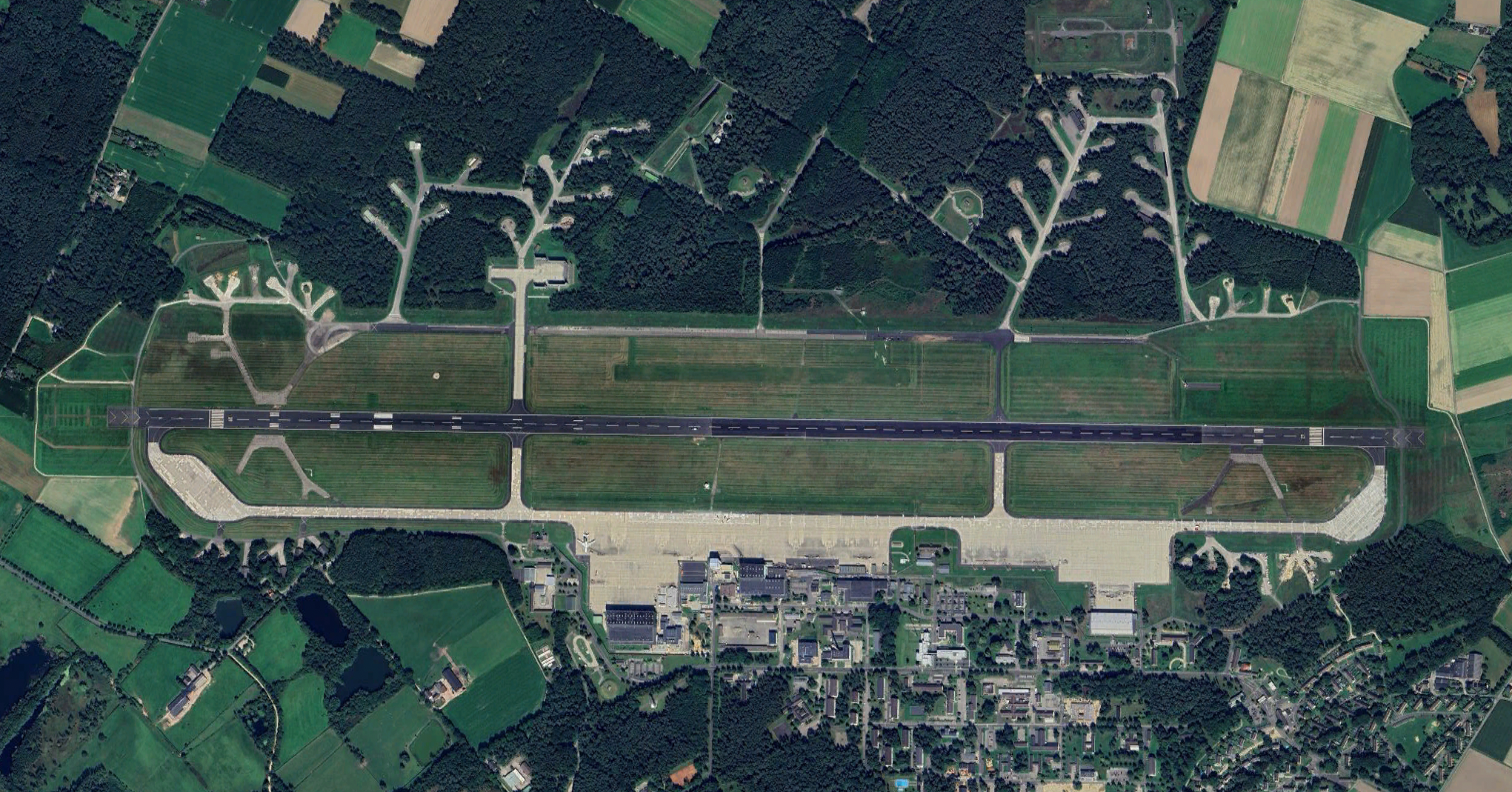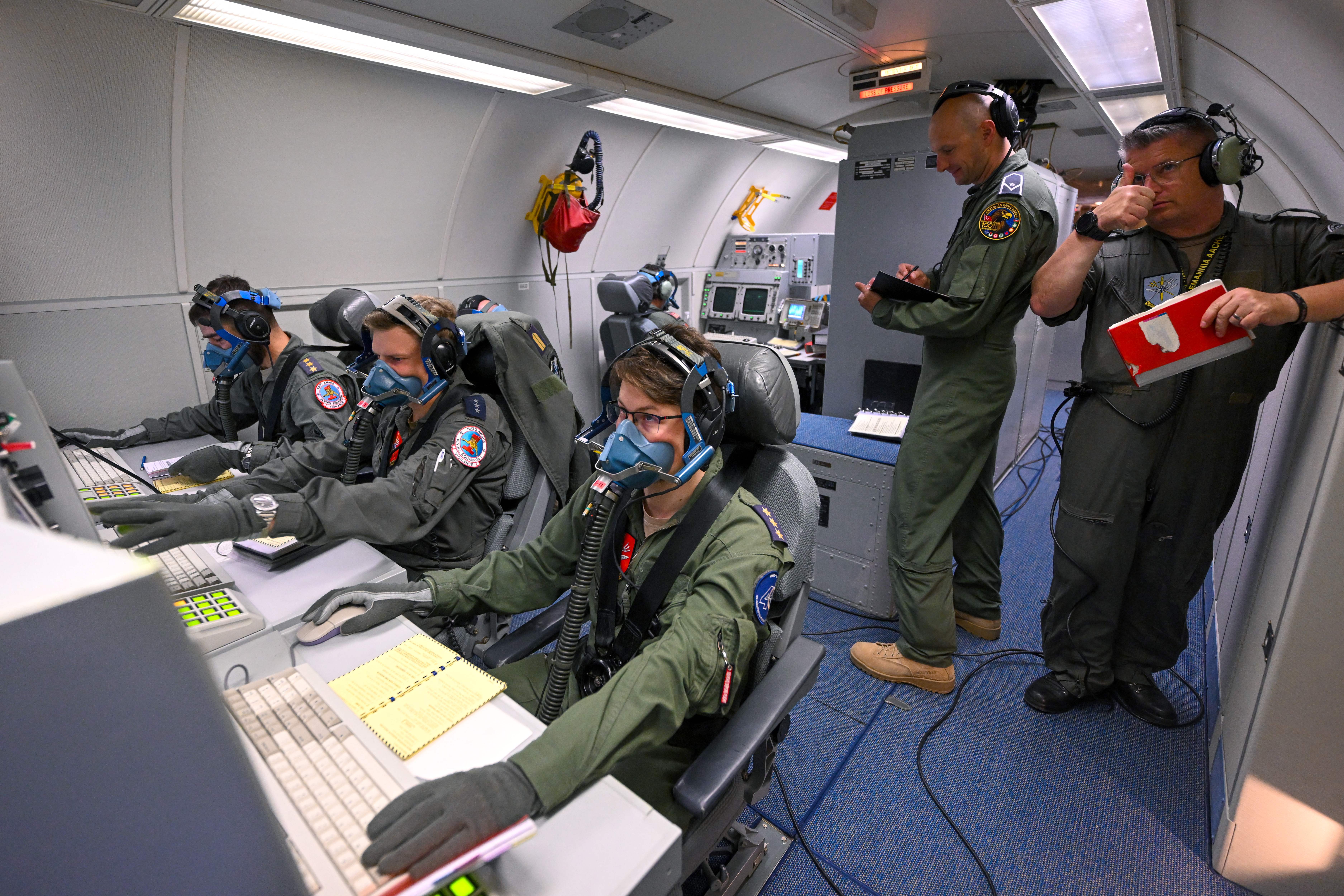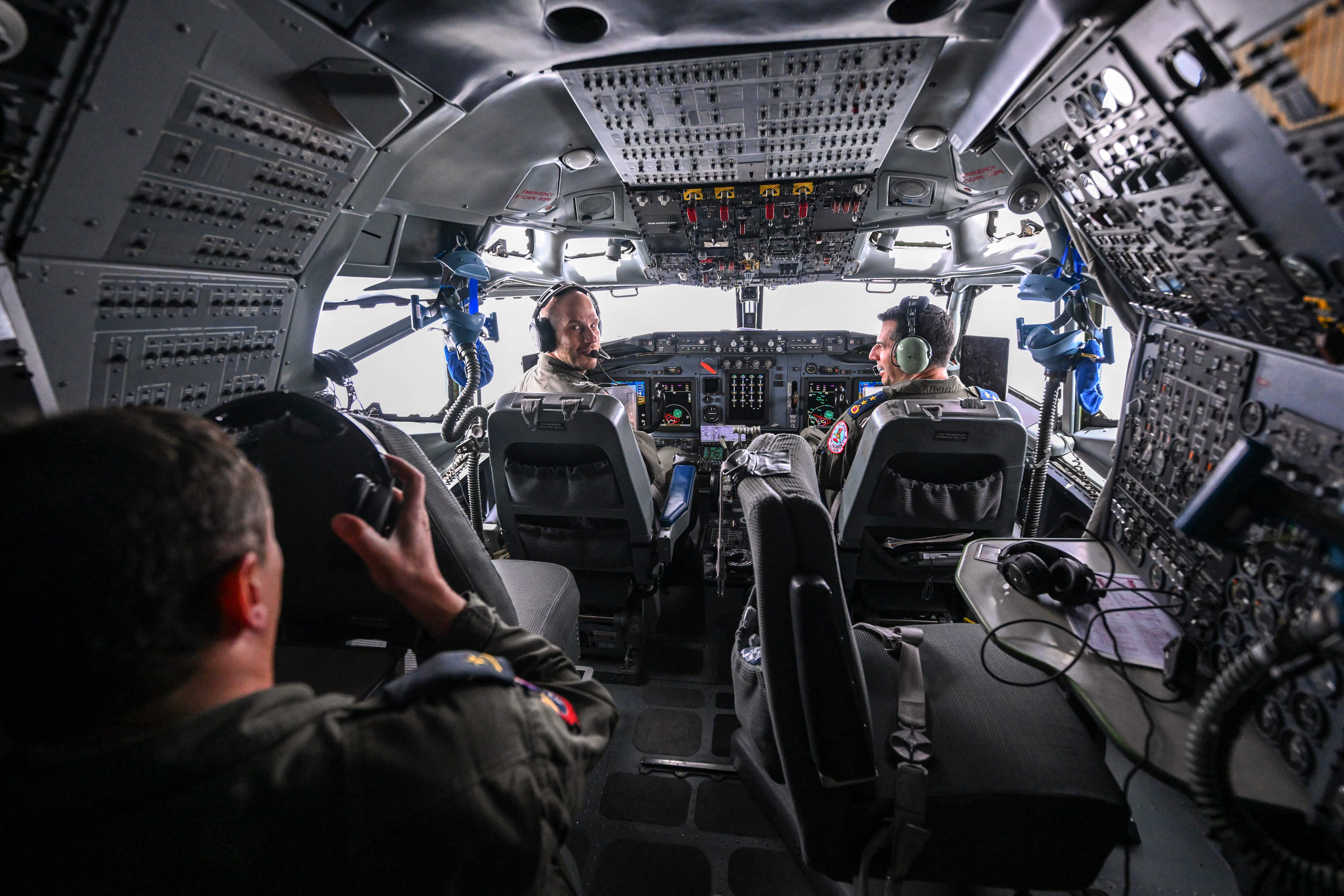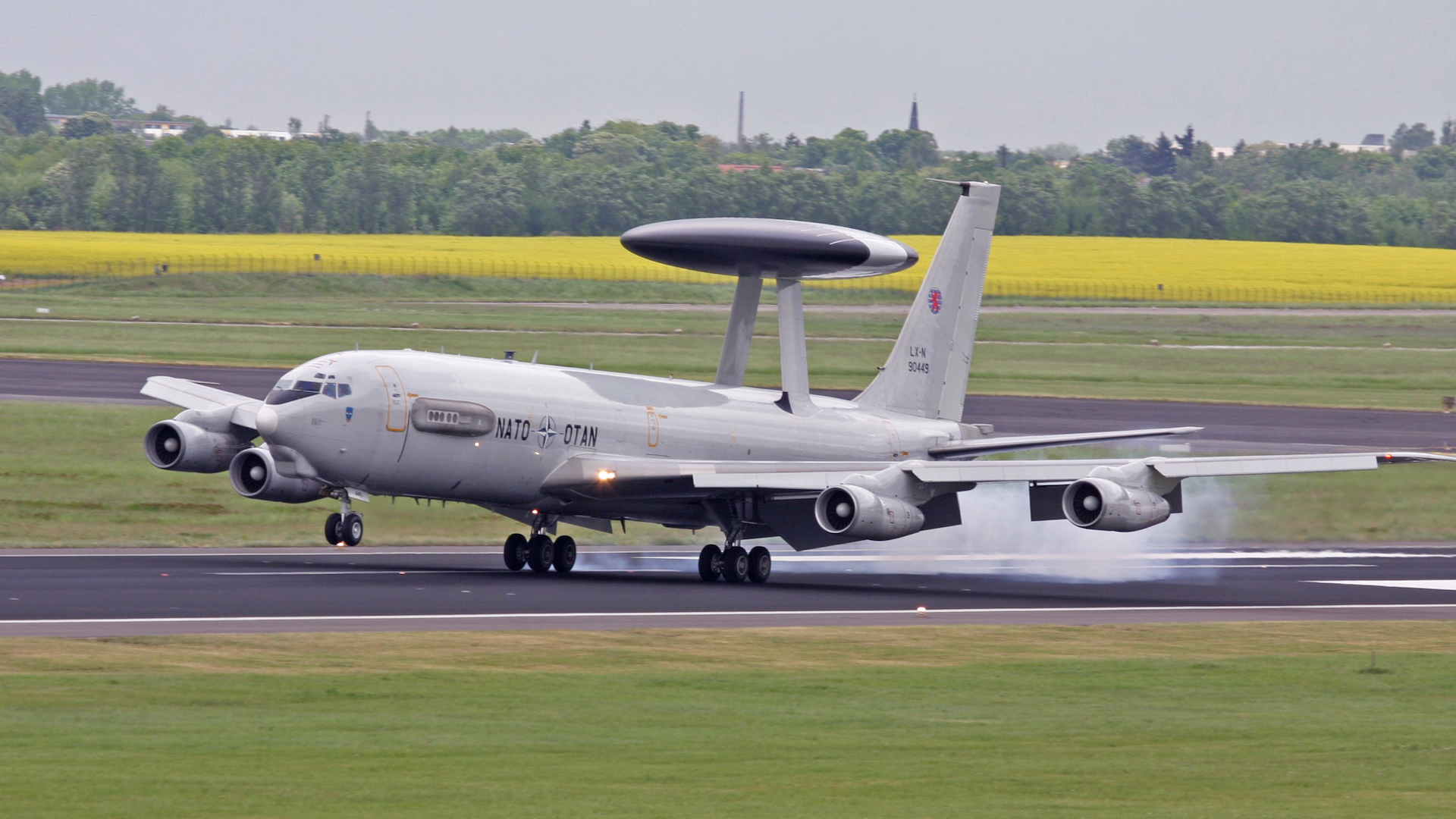The security alert at Geilenkirchen Air Base in Germany last week, which you can read more about here, was due to fears of a possible Russian drone attack, according to a German media report. The latest development comes amid growing fears of Russian-inspired aggression against Germany, including drones, but also involving various other ‘hybrid warfare’ tactics. As the main operating base for NATO’s fleet of E-3 Sentry Airborne Warning and Control System (AWACS), the base in Geilenkirchen, near Aachen, plays a critical role in the alliance — including in regards to Ukraine.

An unnamed source within German intelligence confirmed that the security scare at Geilenkirchen was caused by signs “of preparatory actions for a likely Russian act of sabotage” using a drone, the Deutsche Presse-Agentur reported today. The tip-off reportedly came from an undisclosed foreign intelligence service.
On the other hand, an unnamed security source told Reuters that no drones had been seen in the vicinity of Geilenkirchen and that they could not confirm any evidence of a Russian role.
“The word Russia was never mentioned. We talked about a threat caused by drones,” a NATO spokesperson at Geilenkirchen told Reuters.
As TWZ previously reported, on August 22 the security level at Geilenkirchen Air Base, in the west of the country, was raised to Charlie level, in what NATO described as “a precautionary measure to minimize potential risk to our organization and personnel.” The alliance added that all non-mission essential staff had been sent home “as a precautionary measure” but that the AWACS fleet was still functioning “with minimal staffing as a precautionary measure while operations continued as planned.”
Meanwhile, the German Ministry of Defense confirmed that it had received “intelligence information indicating a potential threat,” without providing any more details.

The next day, NATO announced that it had lowered the security level at Geilenkirchen to Bravo.
In a post on X, NATO said: “The temporary rise to Charlie was a precautionary measure to minimize potential risk to our organization and personnel. All scheduled operations are proceeding as planned.”
Turning to the alert levels, NATO’s security level Charlie is the second highest from a total of four. It indicates that “an incident has occurred, or intelligence has been received indicating that some form of terrorist action against NATO organizations or personnel is highly likely.”
As we have discussed before, NATO’s AWACS fleet at Geilenkirchen is a multinational force and one that plays a hugely important role in the alliance’s air operations, providing airborne early warning, command and control, and battle management capability in Europe and elsewhere. Since before the full-scale Russian invasion of February 2022, this has included constant missions close to the Ukrainian border as well as over the Black Sea, providing the alliance with an overview of Russian and Ukrainian air activity in the region.
The drone scare at Geilenkirchen followed a security alert the previous week, in response to reports of an attempted trespassing incident at the base. This came at the same time as fears of possible sabotage of the water supply at nearby Wahn Barracks. A full sweep was made of the premises at Geilenkirchen without finding any trespassers, while the Wahn Barracks incident proved to be a false alarm.
While no further details of the nature of the presumed drone threat against Geilenkirchen have been released, it’s notable that there have been other drone incidents in Germany in recent weeks, with Russia widely assumed to be implicated.

There has been a spate of reports of unexplained drone activity in the north of the country, including over an industrial park in Brunsbüttel, northwest of Hamburg, which is home to a major floating liquid natural gas (LNG) terminal.
Prosecutors in Germany have said they consider it likely the drone flights are related to “espionage activity for sabotage purposes” and also cite “repeated” drone flights over “critical infrastructure.”
Reports of drone flights over the area began on August 8 and it’s been claimed that the craft have proven difficult to track due to their high speeds —reportedly around 60 miles per hour — and their approach from the sea.

While TWZ has been prominent in its reporting on mysterious intrusions over critical infrastructure and very high-security military bases in the United States, it’s a newer phenomenon that these troubling incidents are now becoming more common in Europe, too.
The fact that Russian-inspired attacks of other kinds have been planned against military bases in Germany is, at this point, an established fact.
In April, two German-Russian nationals were arrested in Germany on suspicion of plotting sabotage attacks, including on U.S. military facilities in the country. One of those individuals was accused of making plans to carry out bomb and arson attacks on military facilities and had allegedly taken photos and videos of military transports and equipment.
At least some of those targets also had a direct link to the war in Ukraine, with one of them being the U.S. Army’s Grafenwoehr base in the southern state of Bavaria, where Ukrainian soldiers are trained to use U.S.-supplied M1 Abrams tanks.
In July, intelligence concerns about possible sabotage attacks by Russian-backed actors saw U.S. military bases across Europe — including in Germany —placed on a heightened state of alert, “for the first time in a decade,” according to CNN.

More generally, these incidents reflect growing concerns across Europe about the risk of an expanding campaign of sabotage, including cyberattacks, inspired by the Kremlin. This is also something that NATO has increasingly warned about, notably in June when NATO Secretary General Jens Stoltenberg outlined what he said was evidence of “a surge of sabotage, cyberattacks, instrumentalized migration, and other hostile actions by Russia.”
TWZ has previously looked at exactly why a hybrid warfare campaign might be especially attractive for Russia. Simply put, an effort of this kind is a relatively low-cost and low-risk way of trying to undermine support for Ukraine within Europe. It’s a means of creating disruption and sowing fear and, so long as it uses proxies to achieve its aims, it remains very hard for such activities to be directly traced back to the Kremlin.

Germany is not alone in being targeted by hostile actors. In only the last few months, other incidents, suspected to be connected to Russia, if not orchestrated directly by Moscow, have been reported in other NATO countries including the Czech Republic, Poland, and the United Kingdom. Last week, we also reported on the disclosure of a sabotage incident at Evenes Air Station, a strategic air base in northern Norway.
While a potential drone attack against a major NATO air base would be a notably bold operation, it could also be attempted, at least, using relatively low-cost drones including short-range types that could be launched from fairly close to the installation. Experiences from the war in Ukraine demonstrate that it can be hard for even modern air defense systems to cope with such a threat, especially when weaponized versions of small, hobbyist-type drones are employed.
Somewhat ironically, Russian AWACS equivalents — A-50 Mainstay airborne early warning and control aircraft — have previously come under drone attack at their base in Belarus, apparently after they were launched by Belarusian partisans. While videos released subsequently did not reveal any damage to the radar planes, they confirmed that drones succeeded in reaching the aircraft on at least two occasions, demonstrating a significant degree of vulnerability.
For the foreseeable future, tensions between Russia and the West look to be a fundamental part of the European security landscape. The latest incidents certainly lend weight to the idea that Germany, and its many military bases and critical infrastructure, are very much on the front line of a developing hybrid war being fought in parallel to the conflict in Ukraine.
Contact the author: thomas@thewarzone.com

